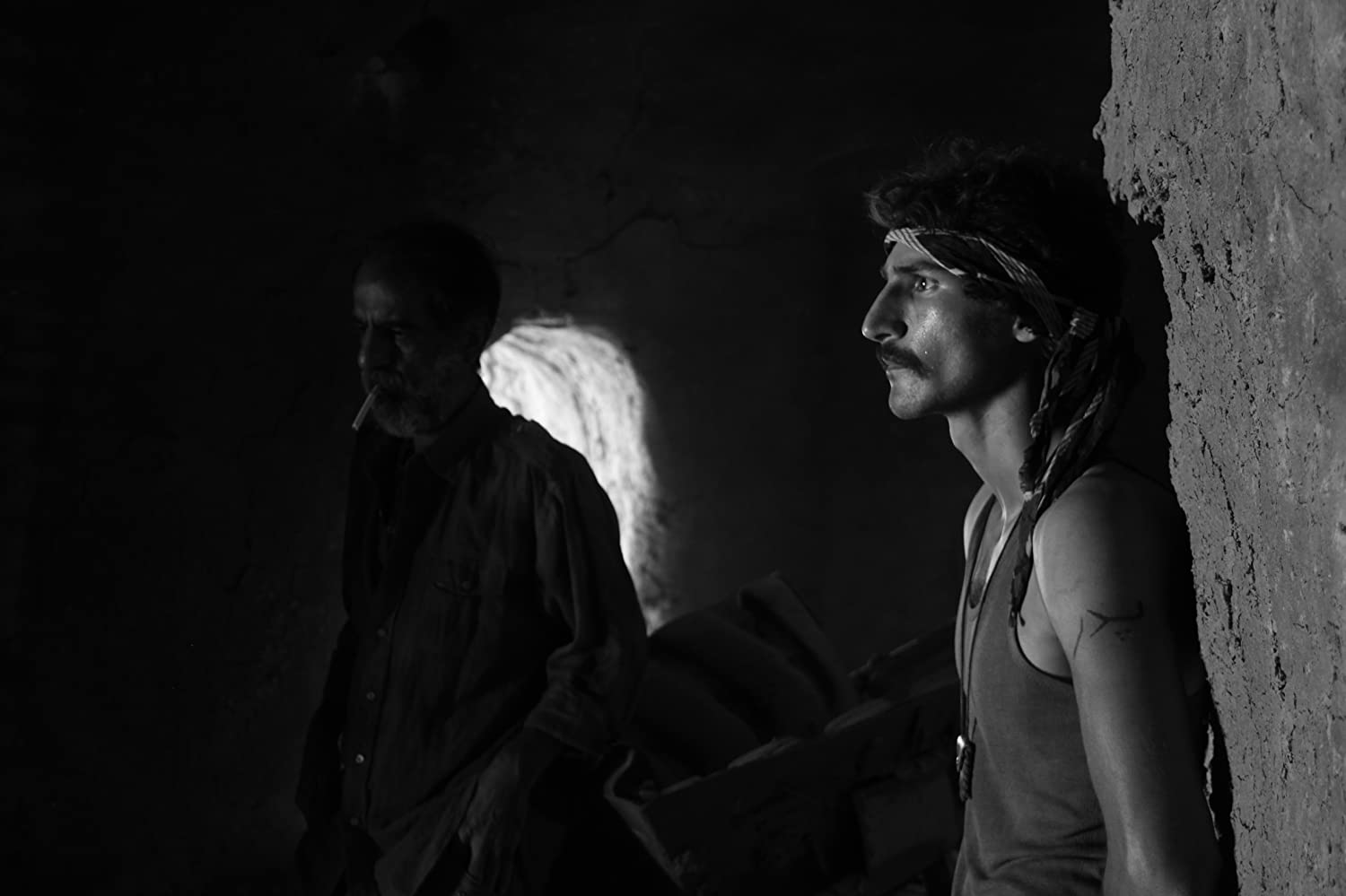As far as emerging talents go few of them are as promising as Ahmad Bahrami, whose highly textural exploration of class inequality in contemporary Iran not only won the FIPRESCI Award, but also the Orizzonti Award for Best Film during the 77th edition of the Venice Film Festival. Contemporary is a deceptive choice of words here, as the black-and-white world of The Wasteland (Dashte Khamoush, 2020) seems to take place in a space out of time — the association with T.S. Eliot’s eponymous modernist epic poem seems no coincidence.
A close-up of melting blocks of ice on the back of a horse-drawn wagon slowly transports us to Bahrami’s wasteland, while making us painstakingly aware of the inevitable passing of time and its damaging impact on these frail surroundings. This film, set in a massive etched out mudbrick factory in the Iranian desert, perfectly embodies the hollowing effect of erosion. Sharp gusts of wind slash through this desolate and ancient environment, where laborers of various ethnic backgrounds live, work and barely get by.
On arrival, Lotfollah (Ali Bagheri), the driver of the wagon and the diligent but aging caretaker of the brickworks, summons all the workers to a central meeting in which the boss of the factory announces the factory’s foreclosure. Nobody needs these traditional bricks anymore, the boss claims, since cement is the new industry standard. He has managed to sell the brickwork to the bank and urges everybody to write down their still unpaid hours of labor and vacate the premises in one day. How and when everybody will get their money remains unclear.
This devastating announcement is the glue that holds together this delicate mosaic film in which all the households of the various laborers are depicted individually. A rich spectrum of cultures, family compositions, religious practices and cultural intricacies are presented in The Wasteland, rendering the local work force as a heterogenous group of people only bound by a shared faith of economic malaise. It makes for an impressive study in the power of repetition and permutation: with each recurring scene depicting the boss’s speech, new bits of information are revealed about this toxic environment in which the working class increasingly appears to be at the mercy of a highly corrupt leader. Every worker has their own specific set of problems — the need for money, a passport, education for a child or a new job — for which the boss offers a fix or remedy. With every new humble request delivered at his towering desk it becomes clearer this man will never honor all these promises. Just like all the declared hours, sheepishly collected by Lotfollah, will never be reimbursed.
There’s a gentleness to the way Bahrami approaches these laborers that makes his personal connection to the material apparent. His father industriously worked in a brickwork for more than twenty-five years. So Bahrami channels impressions and memories of his own days spend in the factory in the densely layered depiction of this increasingly redundant environment. The slow dollies of cinematographer Masud Amini Tirani creep through the cave-like architecture of the brickwork, closely studying its highly textured structures. The Wasteland is also a study in the interplay between light, shadow and texture that almost renders a metaphysical image of this place. The film feels hauntological in the sense that specters of the past seem to linger in this eerie cathedral of labor that slowly turns into an archeological artefact.
Ahmad Bahrami participated in Abbas Kiarostami’s Filmmaking Workshop in Iran in 2010, which might explain his sensitive and humanistic approach to film making. And yet, the work of Béla Tarr seems to be the clearest reference point here. Just like the Hungarian director of Sátántangó (1994), Werckmeister Harmonies (Werckmeister Harmóniák, 2000) and The Turin Horse (2011), Bahrami manages to address the exploitative nature of contemporary society while keeping explicit political commentary at bay. The political and economic reality of this world only takes places outside the margins of the frame. Inside it, mostly a growing sense of melancholy and decay overwhelms the screen.
One could argue that the titular wasteland is the brickwork itself, but it rather seems that the invisible social fabric of capitalism that has established such a corrupt relationship between the working and ruling class is the true wasteland of the film. The breathtakingly tragic finale of the film seems to be a logical conclusion to this striking film in which we witness almost in real-time how life is sucked out of these surroundings. Maybe the real wasteland is what’s left when all life has receded from the film and the screen completely turns black.
Hugo Emmerzael
© FIPRESCI 2020
Edited by Rita di Santo

